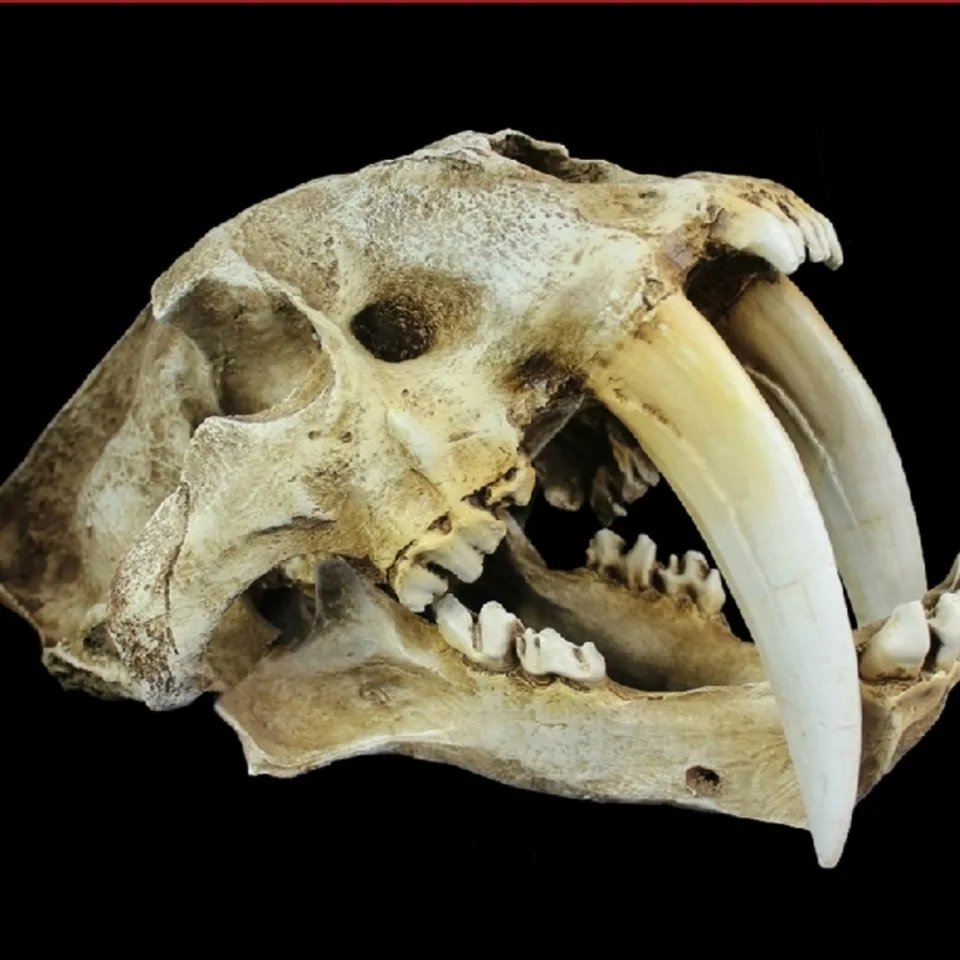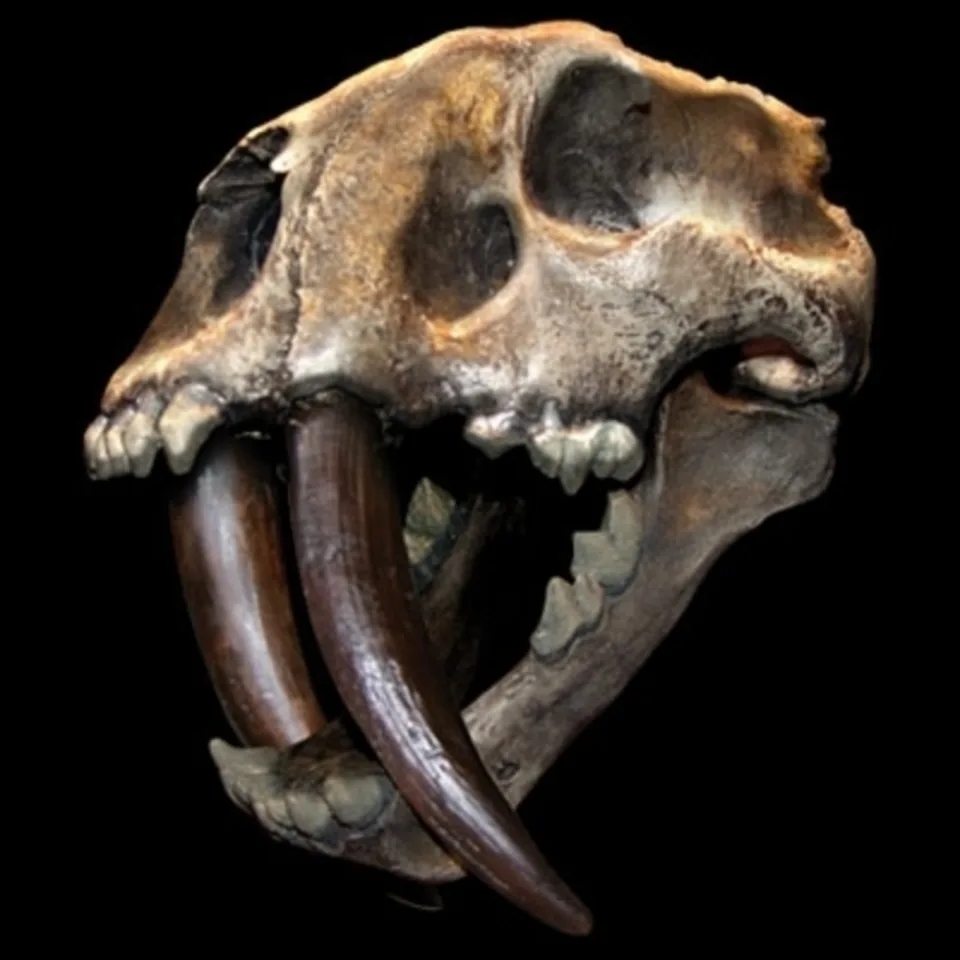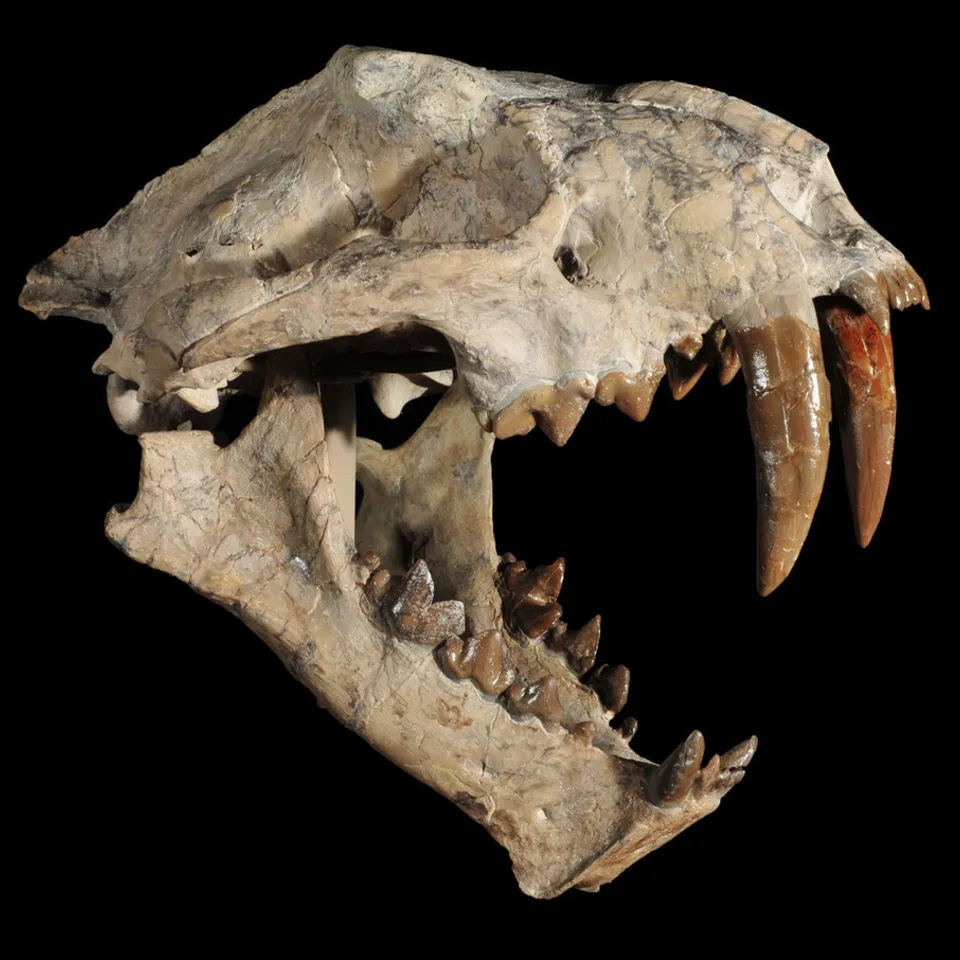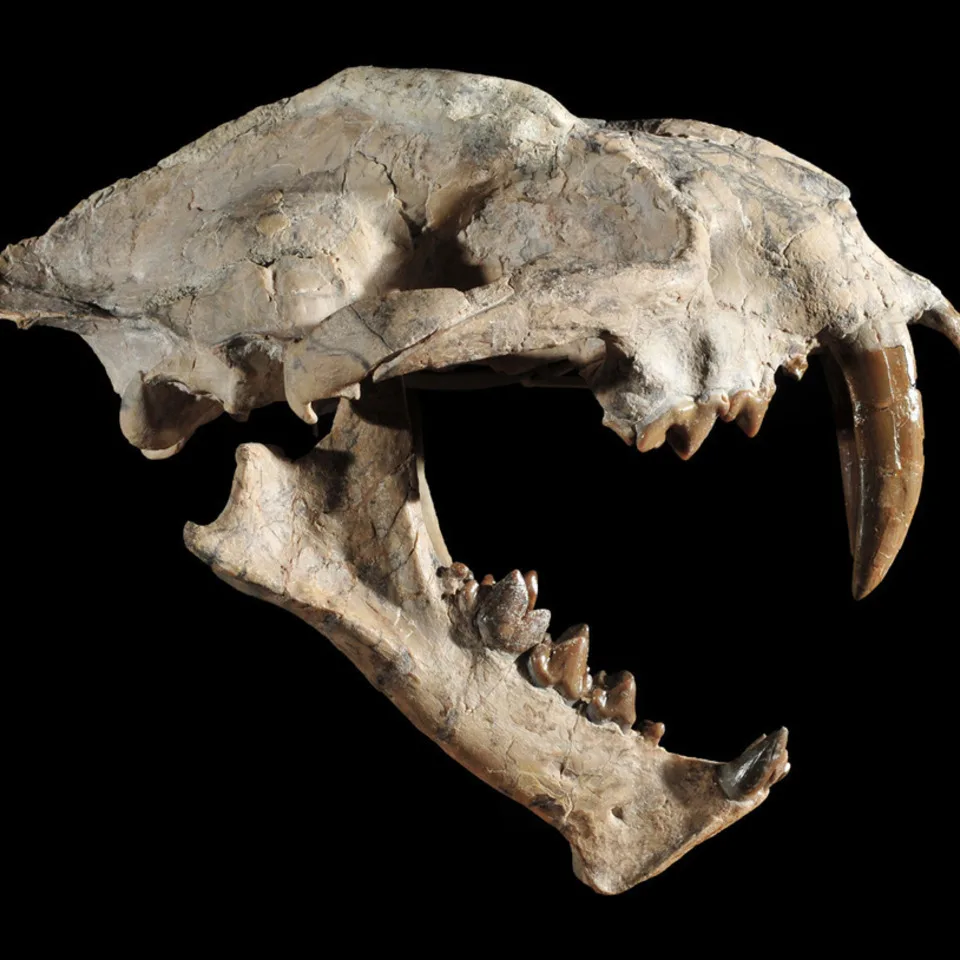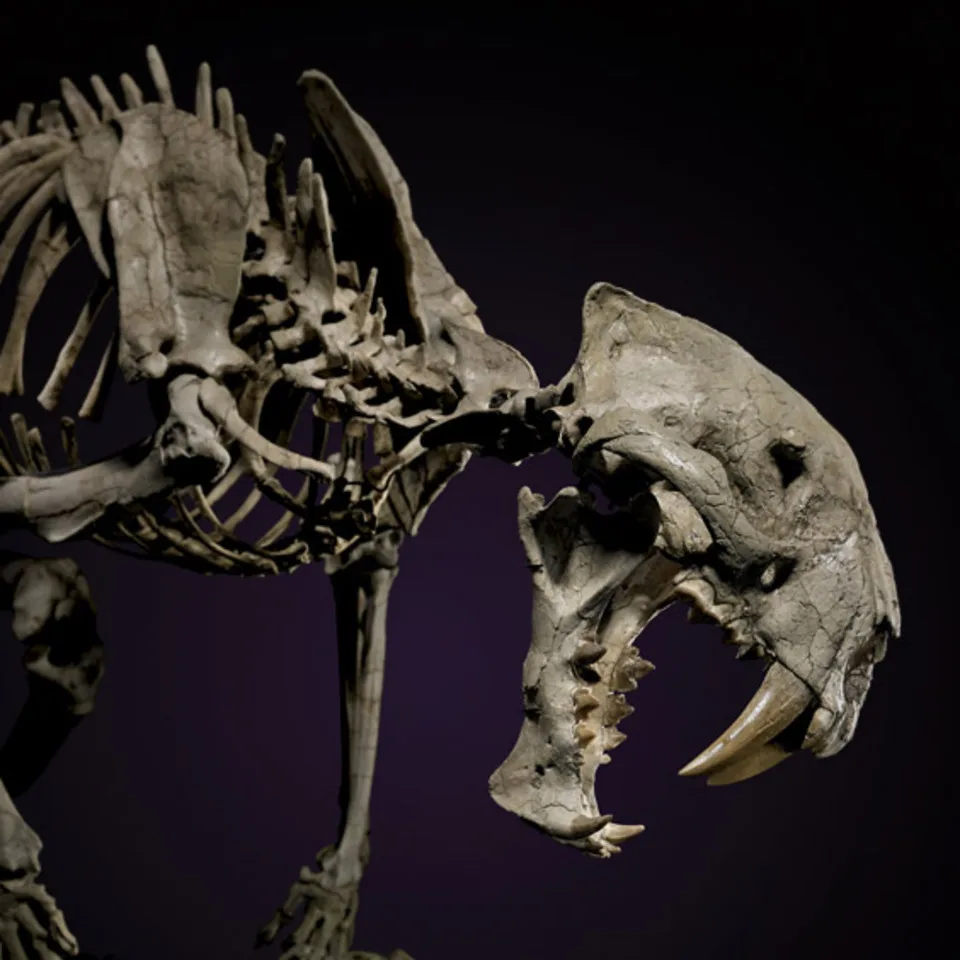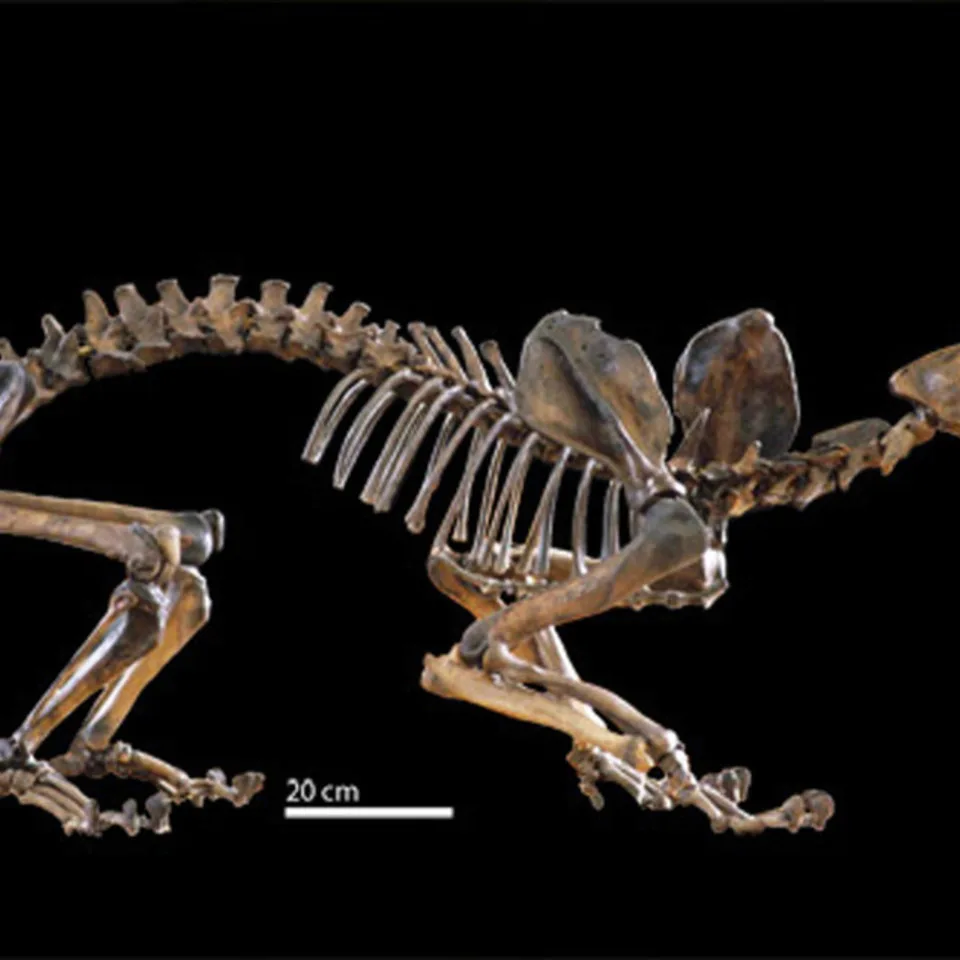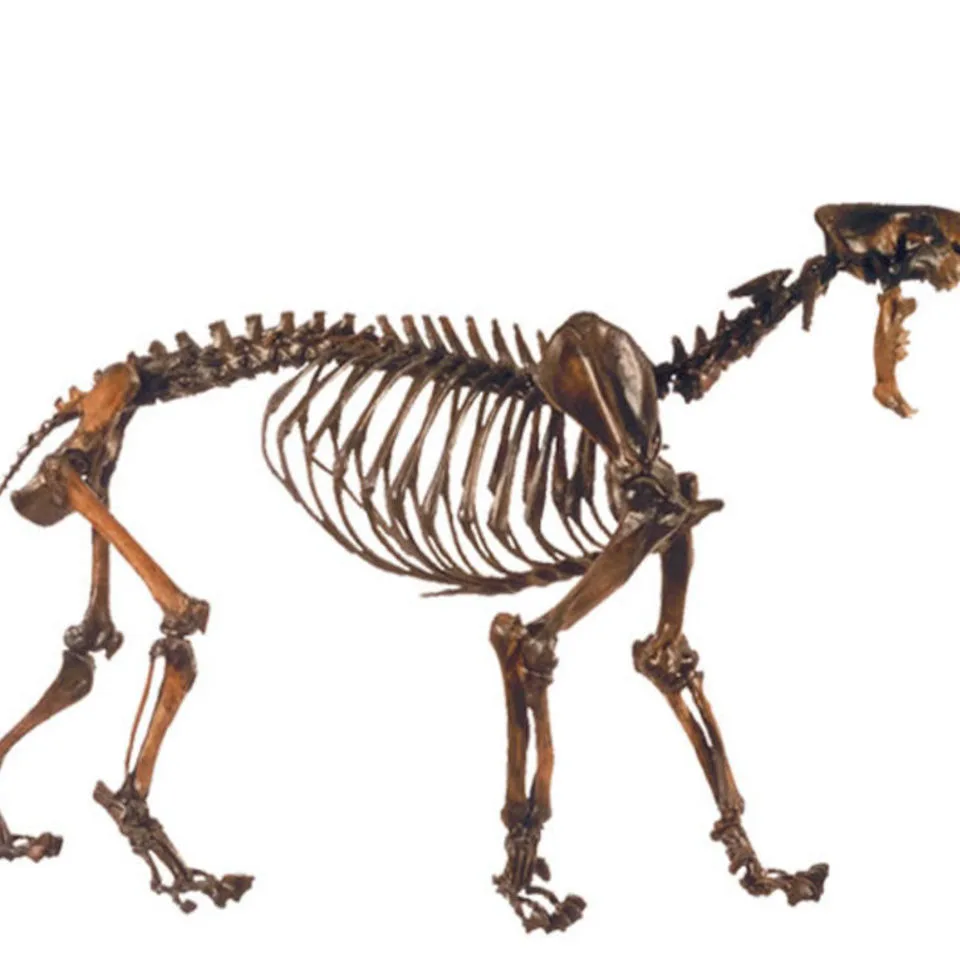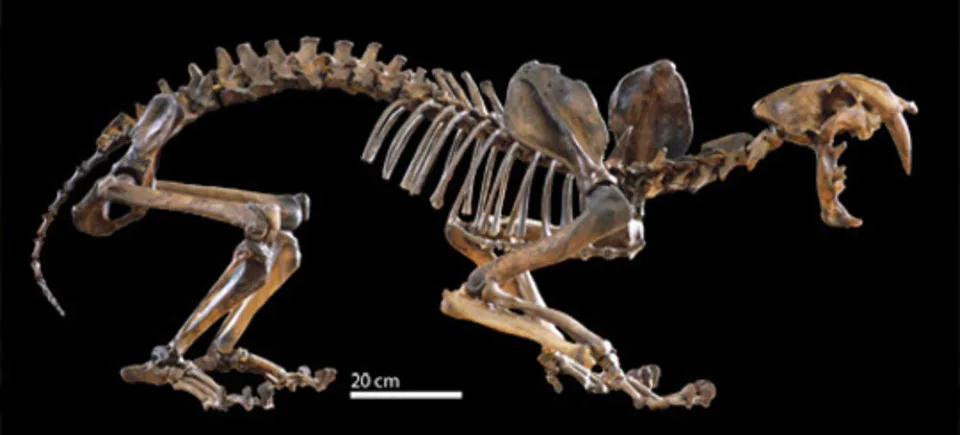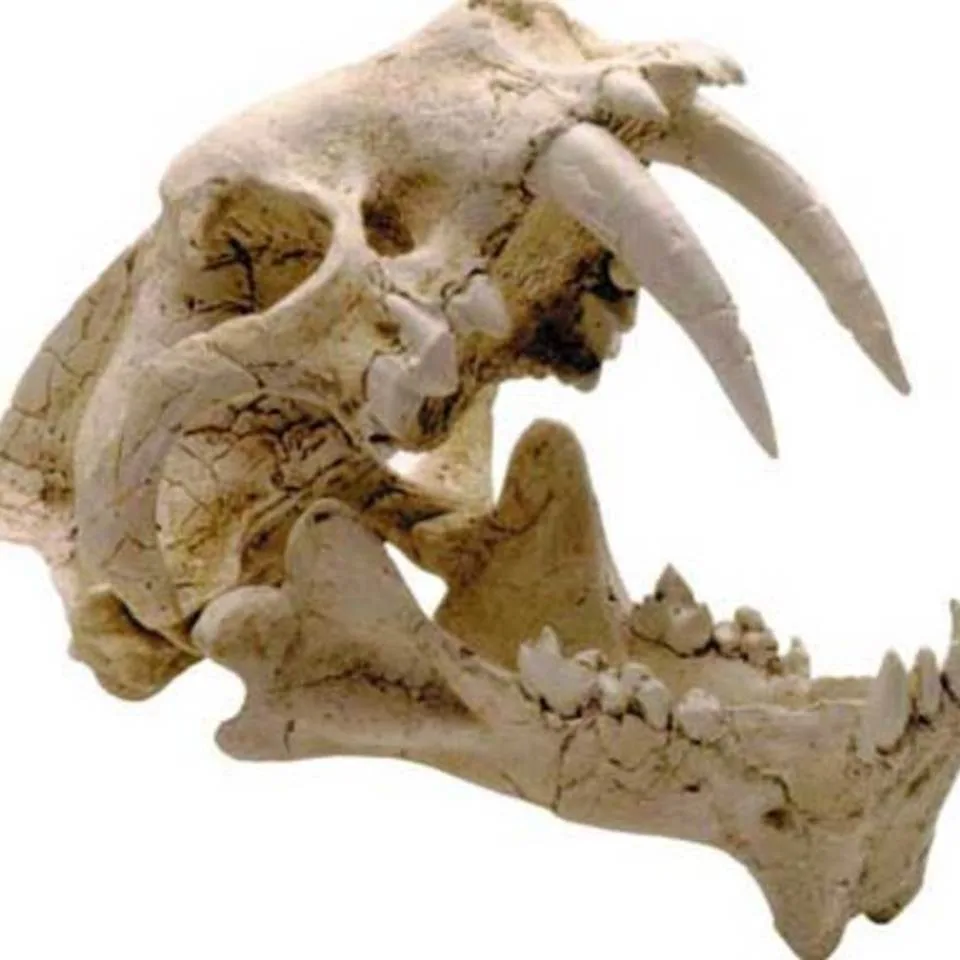SABER TOOTH CATS
Smilodon (Saber Tooth Cats) often called a saber-toothed cat or incorrectly a saber-toothed tiger, is an extinct genus of machairodonts. This saber-toothed cat was endemic to North and South America, living during the Pleistocene epoch (2.5 mya—10,000 years ago). The nickname “saber-tooth” refers to the extreme length of their maxillary canines. Despite the colloquial name “saber-toothed tiger”, Smilodon is not a tiger; the latter belongs to subfamily Pantherinae, whereas Smilodon belongs to subfamily Machairodontinae.
The name Smilodon comes from Greek: σμίλη, (smilē), “carving knife”[3] + ὀδoύς (odoús), “tooth”, or in the genitive: ὀδoύς, ὀδόντος, odóntos. The genus Smilodon was described by the Danish naturalist and palaeontologist Peter Wilhelm Lund in 1841. He found the fossils of Smilodon populator in caves near the small town of Lagoa Santa, in the state of Minas Gerais, Brazil. A number of Smilodon species have been described, but today usually only three are recognized. Genetic evidence suggests the members of the genus diverged from the main lineage of modern cats (subfamily Felinae) around 14-18 million years ago.
The species of Smilodon were among the largest felids ever to live; the heaviest specimens of the massively built carnivore S. populator may have exceeded 400 kg (880 lb). A fully-grown Smilodon weighed approximately 55 to 360 kg (120 to 790 lb), depending on species. It had a short tail, powerful legs, muscular neck and long canines. Smilodon was more robustly built than any modern cat, comparable to a bear. The lumbar region of the back was proportionally short, and the lower limbs were shortened relative to the upper limbs in comparison with modern pantherine cats, suggesting that Smilodon was not built for speed.
The largest species, the South American S. populator, had higher shoulders than hips and a back that sloped downwards, superficially recalling the shape of a hyena, in contrast to the level-backed appearance of S. fatalis, which was more like that of modern cats. However, while its front limbs were relatively long, their proportions were extremely robust and the forearm was shorter relative to the upper arm bone than in modern big cats, and proportionally even shorter than in S. fatalis.
This indicates these front limbs were designed for power rather than fast running, and that S. populator would have had immense strength in its forequarters. Smilodon had relatively shorter and more massive limbs than other felines. It had well developed flexors and extensors in its forepaws, which enabled it to pull down large prey. The back limbs had powerfully built adductor muscles which might have helped the cat’s stability when wrestling with prey. Like most cats, its claws were retractable.
These canine teeth were fragile and could not have bitten into bone; thus, these cats did not use their long teeth while taking down prey, due to the risk of breaking them. Only when their prey was totally subdued did they use their teeth to simultaneously sever the blood supply and strangle the windpipe, quickly killing the prey. Despite being more powerfully built than other large cats, Smilodon actually had a weaker bite.
Modern big cats have more pronounced zygomatic arches, while Smilodon had smaller zygomatic arches which restricted the thickness and therefore power of the temporalis muscles, and thus reduced Smilodon’s bite force. Analysis of its narrow jaws indicates it could produce a bite only a third as strong as that of a lion. There seems to a be a general rule that the saber-toothed cats with the largest canines had proportionally weaker bites.
However, analyses of canine bending strength (the ability of the canine teeth to resist bending forces without breaking) and bite forces indicate the saber-toothed cats’ teeth were stronger relative to the bite force than those of modern “big cats”. In addition, Smilodon could open its jaws 120 degrees, whereas the lion’s gape is limited to 60 degrees.
It has been suggested that Smilodon’s smaller temporalis muscles (controlling much of the bite force) were not used in the killing of prey; rather, Smilodon stretched its jaws around the throat and pressed its canines into the prey with the use of its immense neck and forelimb muscles. The penetration was the result of the neck flexors instead of the jaw muscles, according to this hypothesis. Smilodon probably preyed on a wide variety of large game including bison, tapirs, deer, American camels, horses and ground sloths.
As it is known for the saber-toothed cat Homotherium, Smilodon might have also killed juvenile mastodons and mammoths. Smilodon may also have attacked prehistoric humans, although this is not known for certain. The La Brea tar pits in California trapped hundreds of Smilodon in the tar, possibly as they tried to feed on mammoths already trapped. The Natural History Museum of Los Angeles County has many of their complete skeletons.
Modern big cats kill mainly by crushing the windpipe of their victims, which may take a few minutes. Smilodon’s jaw muscles were probably too weak for this and its long canines and fragile skull would have been vulnerable to snapping in a prolonged struggle or when biting a running prey. Research in 2007 concluded that Smilodon most likely used its great upper-body strength to wrestle prey to the ground, where its long canines could deliver a deep stabbing bite to the throat which would generally cut through the jugular vein and/or the trachea and thus kill the prey very quickly.
The leaders of this study also commented to scientific journalists that this technique may have made Smilodon a more efficient killer of large prey than modern lions or tigers, but also made it more dependent on the supply of large animals. This highly specialized hunting style may have contributed to its extinction, as Smilodon’s cumbersome build and over-sized canines would have made it less efficient at killing smaller, faster prey if the ecosystem changed for any reason. A later study concurred, finding that the forelimbs of Smilodon, more than those of any modern felid, were capable of minimizing the struggles of prey and positioning them for a quick kill with the predator’s canines without them fracturing.
It had long been assumed that machairodonts were solitary, but the idea had no foundation or factual basis, though without any suggestion otherwise, it was widely regarded as true for over 150 years. Recently, research upon which African carnivores respond to playback of animals in distress has been used to analyse the finds of animal species and their numbers at the La Brea tar pits. Such playbacks find animal distress calls such as would come from an animal trapped in the tar pit would attract pack hunters such as lions and spotted hyenas, not lone hunters.
Given the carnivores found at tar pits were predominately Smilodon and the social dire wolf, this suggests that the former like the latter was also a social animal. One expert, who found the study convincing, further speculated that if that was the case, then Smilodon’s exaggerated canine teeth might have been used more for social or sexual signaling than hunting. However, the lack of sexual dimorphism in the canine teeth makes this unlikely.
One of the most abundant sources of machairodont fossils in one locality is the La Brea tar pits in Los Angeles. This rich fossil bed was at one time a pool of thick tar, or asphalt, covered by water to form a small lake. When animals took a drink, they occasionally wandered into the lake, as seen in modern species to soothe skin or sometimes to relieve themselves of parasites, but their feet were caught in the tar, and with each step to try to free themselves, with one foot pulled up out of the tar, the other three sank deeper.
The pits did not kill an animal immediately. They could remain there for days before they died of starvation or shock. In the meantime, vocalizations and struggling attracted predators to the pits, which got themselves stuck as well. The La Brea tar pits are known as a predator trap for this reason. One stuck bison could attract a multitude of predators before expiring. In the pits, predators outnumber prey nine to one.
The machairodont Smilodon, with 13,000 specimens from some 2,000 individuals recovered, is one of the most abundant fossils in the La Brea tar pits, second to the dire wolf which is represented by 200,000 fossils representing 4,000 individuals. Smilodon was always regarded as a solitary species.
The depictions of animals were like vultures to recent carcasses, with lone animals congregating on a kill and fighting over the remains with a gaping show of teeth. The idea that Smilodon lived a solitary life and found a dying animal caught in a tar pit and congregated, one by one, would suggest a very high number of predators in relation to prey.
